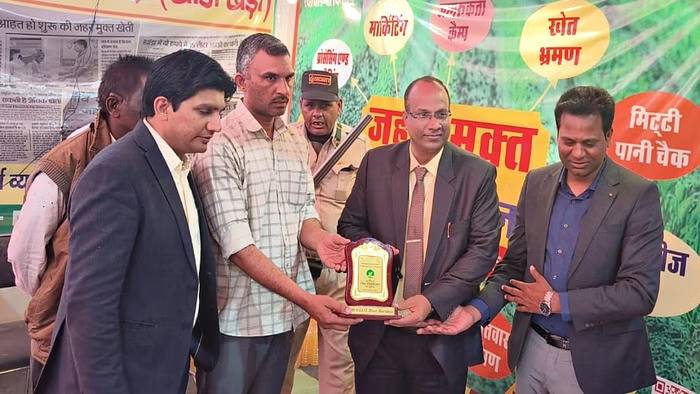
Agricultural practices in India are constantly transforming, with farmers exploring new methods for better yield, we bring the story of Dr Vikram Sindhu, a farmer from Kheda village of the Hisar district, Haryana. Over the past decade, Dr Sindhu has cultivated four acres of his land and leased an additional 37 acres, where he grows diverse crops, including millets, guavas, and sapota (chikoo). Such farming practices have brought him a fortune exceeding Rs 10 lakhs annually.
Embracing Modern Techniques
Dr Vikram Sindhu uses organic farming methods, avoiding the use of synthetic chemicals in his fields. He shared that the majority of his crops are cash crops, particularly focusing on millet. This approach ensures that the crops receive adequate nitrogen, promoting their healthy growth. Over the last decade, he has maintained nitrogen levels in his fields, emphasising the significance of organic practices in achieving high-quality yields.
Diversifying Crop Cultivation
Dr Sindhu employs a model where he plants root vegetables first, followed by other crops. For instance, carrots are planted initially, succeeded by papayas, and then surrounding the field with leafy vegetables like bottle gourds. Additionally, he has established a mahogany orchard around the field. This strategic cultivation enables him to grow multiple crops simultaneously, maximising productivity.
Initiating Sustainable Farming
The journey toward sustainable farming for Dr Sindhu began with a disturbing incident in the community where five individuals succumbed to cancer within a month due to poor dietary habits. Recognising the adverse effects of chemical fertilizers on health, Dr Sindhu was inspired to adopt organic farming techniques.
Direct-to-Consumer Approach
In terms of marketing, Dr Vikram Sindhu directly sells his produce to consumers rather than relying on traditional marketplaces or company traders. He also assists fellow farmers in selling their crops. Regarding the cost and profit aspect of millet farming, the progressive farmer mentioned that the seed cost for self-produced seeds is around Rs 10,000 to 12,000 per acre annually. The profit, on the other hand, ranges from Rs 2,00,000 to 3,00,000 lakhs per acre, making millet cultivation financially viable.
Bountiful Harvests and Economic Gains
Switching to fruit cultivation, Dr Sindhu incurs an annual cost of Rs 40,000 to 50,000 with profits ranging from Rs 6,00,0000 to 8,00,0000. Apart from selling fruits, he also extracts juice from them, further boosting his income. Considering these factors, he now enjoys an annual income surpassing Rs 10,00,000, showcasing the potential for economic prosperity through innovative and sustainable farming practices.
















